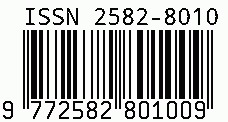
International Journal of Leading Research Publication
E-ISSN: 2582-8010
•
Impact Factor: 9.56
A Widely Indexed Open Access Peer Reviewed Multidisciplinary Bi-monthly Scholarly International Journal
Plagiarism is checked by the leading plagiarism checker
Call for Paper
Volume 6 Issue 4
April 2025
Indexing Partners



















Integration of Data with AI and Reporting for Futuristic Trend Analysis
| Author(s) | Hari Prasad Bomma |
|---|---|
| Country | United States |
| Abstract | Combining information from various sources is crucial for organizations to gain a unified view, facilitating comprehensive data analysis and providing valuable insights. This article explores the critical role of data integration, highlighting the importance of establishing robust data models to handle high volumes of structured and unstructured data. It delves into the advantages of multi dimensional integration, enabling businesses to analyze data from different perspectives, thereby enhancing decision making processes. Additionally, the article discusses the transformative impact of AI driven integration and cloud based solutions in automating data workflows and enabling real time insights. This article underscores the importance of adopting comprehensive data governance frameworks to navigate the complexities of modern data engineering. |
| Keywords | Data Integration, Data Engineering, Artificial Intelligence (AI), Reporting, Aggregations |
| Field | Engineering |
| Published In | Volume 3, Issue 8, August 2022 |
| Published On | 2022-08-10 |
| Cite This | Integration of Data with AI and Reporting for Futuristic Trend Analysis - Hari Prasad Bomma - IJLRP Volume 3, Issue 8, August 2022. DOI 10.5281/zenodo.14769858 |
| DOI | https://doi.org/10.5281/zenodo.14769858 |
| Short DOI | https://doi.org/g83kwd |
Share this


CrossRef DOI is assigned to each research paper published in our journal.
IJLRP DOI prefix is
10.70528/IJLRP
Downloads
All research papers published on this website are licensed under Creative Commons Attribution-ShareAlike 4.0 International License, and all rights belong to their respective authors/researchers.

